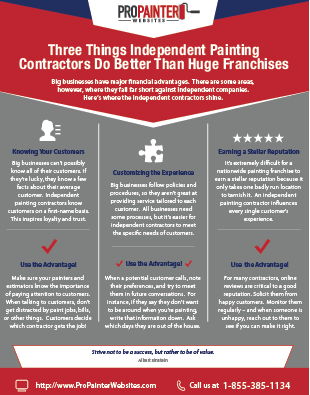Seasonal Factors In Industrial Exterior Painting: Secret Insights You Should Be Aware Of
Seasonal Factors In Industrial Exterior Painting: Secret Insights You Should Be Aware Of
Blog Article
Web Content Produce By-Burnham Chaney
When you're preparing a business exterior painting project, seasonal aspects can make or damage your outcomes. You'll want to think about exactly how temperature level and humidity influence paint application and drying times. Picking the best season can guarantee your paint adheres properly and lasts longer. Yet which periods are really the very best for this kind of work? Let's explore the key elements that can impact your task's success.
The Impact of Temperature Level on Paint Application
When you're preparing an industrial exterior paint job, the temperature level can dramatically affect just how well the paint sticks and dries out.
Preferably, you wish to paint when temperatures range in between 50 ° F and 85 ° F. If it's as well cold, the paint may not cure appropriately, leading to issues like peeling off or cracking.
On the other side, if it's as well warm, the paint can dry also quickly, avoiding correct attachment and causing an unequal surface.
You need to additionally consider the time of day; morning or late afternoon uses cooler temperatures, which can be more positive.
Constantly check the producer's referrals for the specific paint you're using, as they usually offer support on the excellent temperature level range for optimum outcomes.
Moisture and Its Effect on Drying Times
Temperature level isn't the only environmental element that affects your business external paint project; moisture plays a significant duty too. High moisture degrees can slow down drying times significantly, influencing the overall quality of your paint job.
When the air is saturated with wetness, the paint takes longer to treat, which can result in issues like inadequate adhesion and a greater danger of mildew growth. If over at this website on a specifically damp day, be prepared for prolonged wait times between layers.
It's crucial to check local weather and strategy appropriately. Ideally, go for humidity levels between 40% and 70% for ideal drying out.
Keeping these consider mind guarantees your task remains on track and provides a lasting finish.
Best Seasons for Commercial Exterior Painting Projects
What's the very best time of year for your business exterior painting tasks?
Spring and very early autumn are generally your best choices. Throughout these periods, temperature levels are light, and humidity degrees are typically reduced, producing perfect problems for paint application and drying out.
Stay clear of summer season's intense heat, which can cause paint to dry also quickly, resulting in inadequate bond and coating. Likewise, related web site can impede proper drying out and healing, taking the chance of the long life of your paint work.
Go for days with temperature levels between 50 ° F and 85 ° F for optimal outcomes. Remember to inspect the regional weather forecast for rain, as damp conditions can wreck your project.
Preparation around these variables guarantees your paint job runs efficiently and lasts much longer.
Conclusion
Finally, planning your business outside paint jobs around seasonal factors to consider can make a substantial difference in the outcome. By scheduling job during the ideal temperature levels and humidity levels, you'll ensure better adhesion and drying times. Remember to keep an eye on local weather prediction and select the right time of year-- springtime and early autumn are your best bets. Taking these steps will assist you attain a sturdy and specialist finish that lasts.
